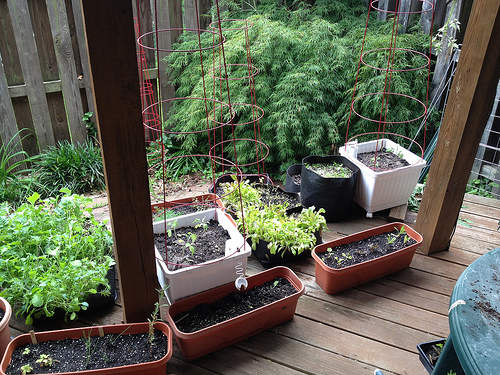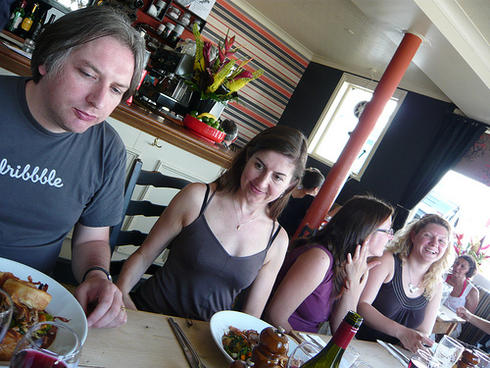Today is World Food Day, part of a global movement to create awareness around hunger and malnutrition.
According to a report [PDF] recently released by the Natural Resources Defense Council, 40 percent of U.S. food goes uneaten, the equivalent of $165 billion wasted each year. The report estimates that if food waste was reduced by 15% it would be enough to feed 15 million Americans yearly.
There are no easy answers to creating greater food equality around the world, but there are things each of us can do to make sure we treat food with the respect it deserves. First, we should look for ways to opt out of the factory-farmed food system. Second, we need to do everything possible not to waste the food we have. Third, we should attempt redistribute surplus food to those who can use it.
Sound overwhelming? It doesn't have to be! In fact, collaborative consumption companies and creative P2P sharing solutions can help achieve all of these goals. Here's how:
Opt Out of the Factory-Farmed Food System

Image via boboroshi/Flickr
Growing, raising and making your own food stuffs reduces your reliance on the unstable agricultural industry, and gives you more control over what goes into your body. Gardening, participating in a CSA, supporting local farmers' markets, and learning how to make and preserve your own foods preserves valuable artisan skills and enhances your own self-sufficiency.
Give it a try!
How to Share a Chicken (or Two)
How to Raise Urban Chickens
How to Start a Farmers' Market
How to Share a Cow
How to Grow a Garden on Your Balcony
Ingredients For A Successful Urban Kitchen Garden
Prevent Unnecessary Food Waste

Image via sporkist/Flickr
Recent estimates say that 222 million pounds of food are wasted each year. Some of this waste is due to the fact that people have forgotten how to cook from scratch and allow fresh foods to go bad before they can be used. Grocery stores also contribute to this waste by trashing perfectly edible food because it's an hour or two past its "sell-by" date. Eliminating food waste starts with more efficient shopping, increased knowledge about how to cook a variety of foods, and rescuing good food from the dumpster when necessary. Technology can be very helpful when it comes to reducing food waste, and if you're an app-lover, you might check out these four food-conserving mobile applications.
Give it a try!
Food Swaps: Trading Tasty Treats Keeps Culinary Boredom at Bay
How to Host a MamaBake Food Swap Session
How to Glean for Good
Eating Rich, Living Poor: DIY Food By Necessity
How I Learned To Stop Worrying And Love The Dumpster
Redistribute Surplus Food In Your Community

Image via WordRidden/Flickr
As the statistics mentioned previously demonstrate, the problem isn't a lack of food–it's that due to the centralized nature of our food system and economy, millions of pounds of food perish before reaching the mouths of those who really need it. In the same way that the sharing economy provides access to goods and services, technology and social networks can be utilized to redistribute surplus food quickly so that it's eaten instead of trashed. Simple P2P sharing techniques can also be used to create strong community connections through food, enriching our lives while also filling bellies!
Give it a try!
How To Reinvent The Potluck
The Shareable Feast
How To Host A Stranger Dinner
How A Babyfood Swap Saved My Sanity And Fed My Child
How To Start A Crop Mob
6 Online Services Making Food More Shareable









